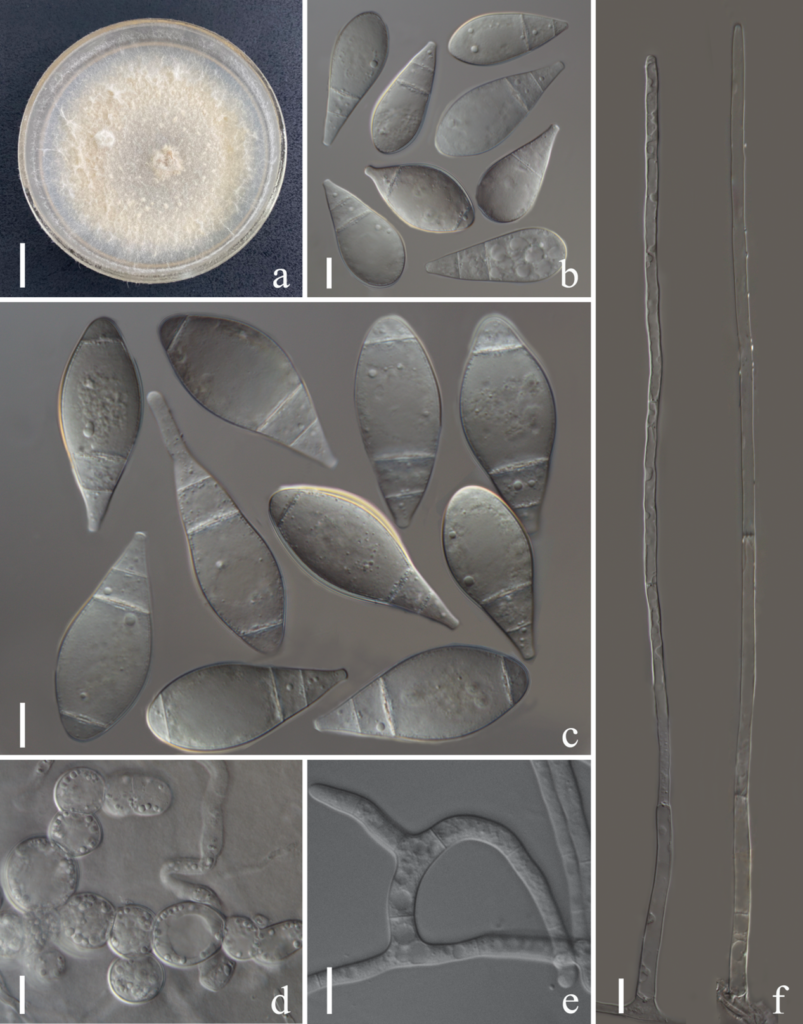Arthrobotrys lanpingensis F. Zhang, X.Y. Yang & K. D. Hyde, sp. nov. FIGURE 3.
MycoBank number: MB; Index Fungorum number: IF; Facesoffungi number: FoF 10762;
Etymology: The species name “lanpingensis” refers to the name of sample collection site: Lanping county, Nujiang City, Yunnan Province, China. FoF 10762
Colonies on PDA white, cottony, growing rapidly, reaching a colony diameter of 50 mm after 10 days incubation at 27°C. Mycelium colourless, composed of septate, branched, smooth hyphae. Conidiophores hyaline, erect, septate, unbranched, bearing a single holoblastic conidium at apex, 241–503 µm (x̅ =307.5 µm, n = 50) long, 3.5–7 µm (x̅ = 4.7 µm, n = 50) wide at base, gradually tapering upwards to 2–3.5 µm (x̅ = 2.4 µm, n = 50) wide at apex. Conidia hyaline, smooth, mostly subfusiform, sometimes pyriform, with widest central cell, 1–4-septate, mostly 3-septate (two at base and one at apex), broadly rounded at apex, truncate at base, 31–55 × 13.5–24.5 µm (x̅ = 45.4 × 19.7 μm, n = 50). Chlamydospores hyaline, smooth, globose or ellipsoidal, growing in chains, 8–27 × 8–25 µm (x̅ = 17.4 × 14.5 μm, n = 50). Capturing nematodes with adhesive network.
Material examined: CHINA, Yunnan Province, Nujiang City, Lanping county, from freshwater sediment, 16 May 2015, F. Zhang. (DLUCC18, Holotype!).
Sequence data: ITS: OM855566

FIGURE 3. Arthrobotrys lanpingensis (DLUCC18, holotype!). (a) Colony. (b, c) Conidia. (d) Chlamydospore. (e) Trapping-device: adhesive network. (f) Conidiophore. Scale bars: (a) = 1cm, (b–f) = 10 µm.
